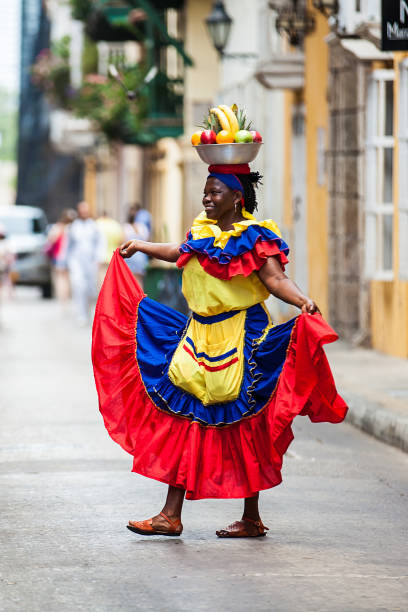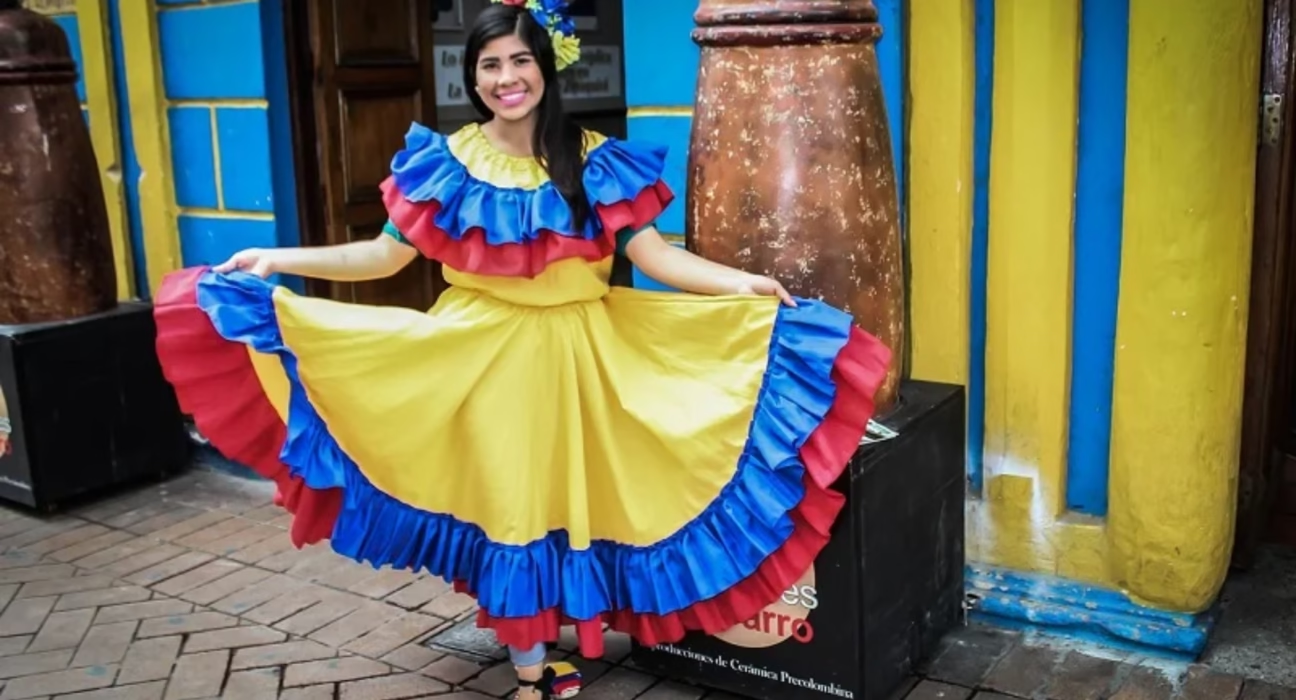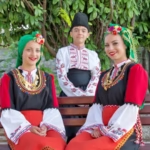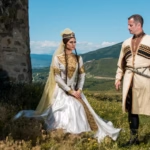The Colombian national costume reflects the rich cultural tapestry of Colombia, showcasing its diverse heritage and historical influences. This vibrant attire is not merely a garment; it embodies the stories, traditions, and spirit of the Colombian people. From the lush Amazon rainforest to the bustling urban centers of Bogota and Medellin, the national costume weaves together the threads of indigenous, African, and Spanish cultures, creating a unique expression of identity that resonates deeply with Colombians everywhere.
The History Behind the Colombian National Costume

Understanding the Colombian national costume begins with a look at its historical roots. Colombia’s history is marked by the confluence of various cultures that have influenced its social fabric. From pre-Columbian societies to colonial times and modern-day influences, each period has contributed to the evolution of traditional attire.
Indigenous Influences on Traditional Attire

Indigenous communities have played a crucial role in shaping Colombian culture, and their influence is evident in the traditional clothing worn today.
The use of natural materials such as cotton, wool, and leather reflects the resourcefulness of these communities. Bright colors and intricate patterns often found in indigenous clothing are symbolic of spiritual beliefs and connection to nature. For example, textiles produced by the Wayúu people in La Guajira are characterized by vivid designs that tell stories of their ancestors and environment.
Moreover, the importance of communal rituals is reflected in the way certain garments are worn during festivals and ceremonies. These customs preserve and honor the collective memory and identity of the community, highlighting how traditional dress goes beyond aesthetics to encompass deep cultural significance.
Spanish Colonial Impact

The arrival of Spanish colonizers in the 16th century brought dramatic changes to Colombia’s social structure, economy, and, importantly, its clothing styles.
Spanish influence introduced European fashion elements, merging them with indigenous styles. This blending created a unique sartorial identity that remains prominent in current Colombian attire. For instance, the use of lace, embroidery, and fitted garments can be traced back to Spanish colonial fashion.
In regions such as Antioquia and Valle del Cauca, you can see how traditional dresses incorporate both the elegance of Spanish style and the vibrancy of local customs. This fusion exemplifies the dynamic interplay between different cultures and highlights how Colombia’s national costume serves as a living history book.
African Heritage and Its Role in Cultural Expression
The African diaspora has enriched Colombian culture, particularly in coastal regions like the Pacific and Caribbean. The garments associated with Afro-Colombian communities feature bright colors and bold patterns, symbolizing both joy and resilience.
Traditional outfits such as the “tela de bodega” have become synonymous with Afro-Colombian identity. These colorful skirts and headwraps, often elaborately designed, are worn during celebrations, parades, and dances such as the famous Currulao. The rhythmic movements of the dance are mirrored in the flowing fabrics, which create a visual spectacle that captivates audiences.
By acknowledging the contributions of African heritage, we gain a fuller understanding of the diverse influences that shape the Colombian national costume, marking it as a true representation of unity amidst diversity.
The Elements of Colombian National Costume

To appreciate the full beauty of the Colombian national costume, it’s important to explore its key elements, which vary across regions and incorporate distinct cultural markers. These elements highlight the craftsmanship and artistry involved in traditional attire.
Fabrics and Textiles: The Heartbeat of Tradition

Fabrics and textiles are fundamental to the Colombian national costume. Colombia boasts a variety of textile production techniques, each connected to regional identity.
For instance, the use of “mola” textiles from the Guna women of the San Blas Islands showcases vibrant colors and intricate reverse appliqué techniques. The mola patterning illustrates narratives of everyday life, spirituality, and the natural world, all stitched into the fabric.
Furthermore, the use of handcrafted materials emphasizes the artisanal skill present in traditional clothing. Each garment tells a story, illustrating not only aesthetic appeal but also the labor and love poured into its creation. Such textiles serve as a bridge connecting generations, preserving skills and knowledge passed down through time.
Iconic Garments That Define National Pride

Certain garments have become iconic representations of Colombian culture, each with its own significance, style, and regional variations.
One notable example is the “pollera,” a traditional Colombian skirt characterized by vibrant layers and embroidered details. Originating from the Caribbean region, the pollera is often worn during festive occasions and symbolizes pride in Colombian heritage. When paired with the “blusa,” or blouse, it forms a striking ensemble that captures attention and admiration.
Another significant attire is the “sombrero vueltiao,” a hat made from the leaves of the “caña fleha.” This piece not only represents Colombian craftsmanship but also functions as a symbol of cultural identity. Worn across various regions, the sombrero vueltiao embodies a sense of unity and belonging among Colombians.
These garments showcase how fashion transcends mere utility, emerging instead as a celebration of Colombia’s multifaceted identity.
Accessories That Tell Stories

Accessories play a vital role in enhancing the overall attire and add distinctive character to the Colombian national costume. They often hold personal and cultural significance, serving as symbols of heritage and tradition.
Jewelry, such as “aretes” (earrings) and necklaces adorned with colorful beads and stones, reflect the artistic talents of various indigenous groups. These adornments are typically handmade and often include motifs that resonate deeply with the wearer’s cultural background.
Additionally, the incorporation of handcrafted bags, known as “mochilas,” further exemplifies the connection between functionality and aesthetics. These bags allow for practical storage while simultaneously being a canvas for expressing artistic styles and cultural narratives.
Accessories thus become integral components of traditional attire, enriching the experience of wearing the Colombian national costume.
Contemporary Interpretations of Colombian National Costume

As society evolves, so do the interpretations and expressions of traditional attire. Contemporary designers and fashion enthusiasts are redefining the Colombian national costume, breathing new life into age-old traditions while honoring their roots.
Fusion of Tradition and Modernity

A significant trend in Colombian fashion is the fusion of traditional elements with modern design concepts. Many contemporary designers draw inspiration from the colors, textures, and motifs found in traditional costumes, reimagining them for today’s fashion-forward consumers.
This blend results in stunning pieces that retain the essence of Colombian culture while appealing to global markets. Designers like Silvia Tcherassi and Esteban Cortázar have gained international recognition, showcasing how the Colombian national costume can evolve while maintaining its cultural integrity.
Moreover, fashion shows featuring traditional attires have become platforms for exploring themes of identity, cultural exchange, and sustainability. By incorporating modern silhouettes and eco-friendly materials, these designs address contemporary issues while honoring traditional craftsmanship.
The Role of Festivals in Preserving Tradition
Cultural festivals play a crucial role in preserving and promoting the Colombian national costume. These events provide a platform for showcasing traditional garments and performances, attracting both locals and international visitors.
One of the most prominent festivals is Barranquilla’s Carnival, where vibrant costumes take center stage. The festival celebrates the multicultural heritage of Colombia, inviting participants to don traditional attire while engaging in lively dances, music, and theatrical performances. The sheer joy and exuberance of carnival embody the spirit of Colombian culture.
Such festivals not only promote awareness of traditional attire but also foster a sense of pride among Colombian citizens. As communities come together to celebrate their heritage, they keep their cultural narratives alive, ensuring that future generations remain connected to their roots.
Global Recognition and Influence

In recent years, the Colombian national costume has gained international attention, with designers and artists sharing their interpretations on global platforms. The rise of social media has played an essential role in this phenomenon, allowing Colombian artisans to showcase their work and connect with a broader audience.
Influencers and celebrities donning traditional Colombian garments amplify their visibility, sparking interest in the craftsmanship behind these pieces. Moreover, collaborations between Colombian designers and global brands often lead to cross-cultural exchanges, resulting in innovative designs that honor Colombian heritage while appealing to diverse markets.
This global recognition not only celebrates Colombian culture but also inspires discussions about cultural appropriation and authenticity. It encourages conversations about the importance of respecting the narratives embedded within traditional attire and the artisans who create them.
Conclusion

The Colombian national costume stands as a vibrant testament to the country’s rich history, diverse cultures, and unwavering spirit. From its historical roots to contemporary interpretations, traditional attire continues to evolve while honoring its legacy.
Through the exploration of fabrics, iconic garments, and modern influences, we gain a profound appreciation for how clothing serves as a narrative thread weaving together Colombia’s collective identity. As Colombians proudly don their national costumes during celebrations and festivals, they not only express their individualism but also embrace their shared heritage.
Ultimately, the Colombian national costume is much more than a beautiful garment; it is a living symbol of a nation’s journey, encapsulating the values, stories, and dreams of its people. In celebrating this rich tapestry, we foster a deeper understanding of what it means to belong to a culture steeped in history and tradition.






